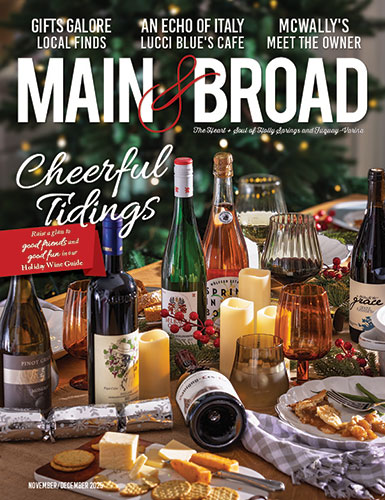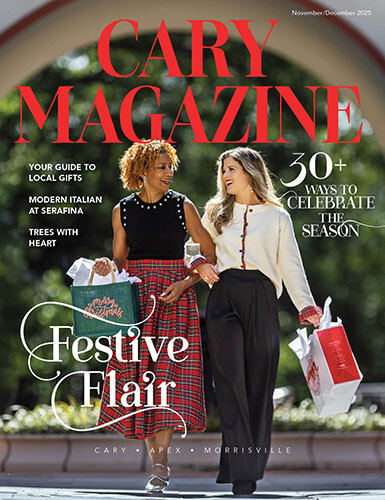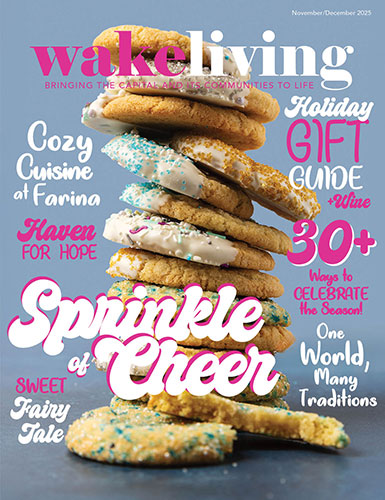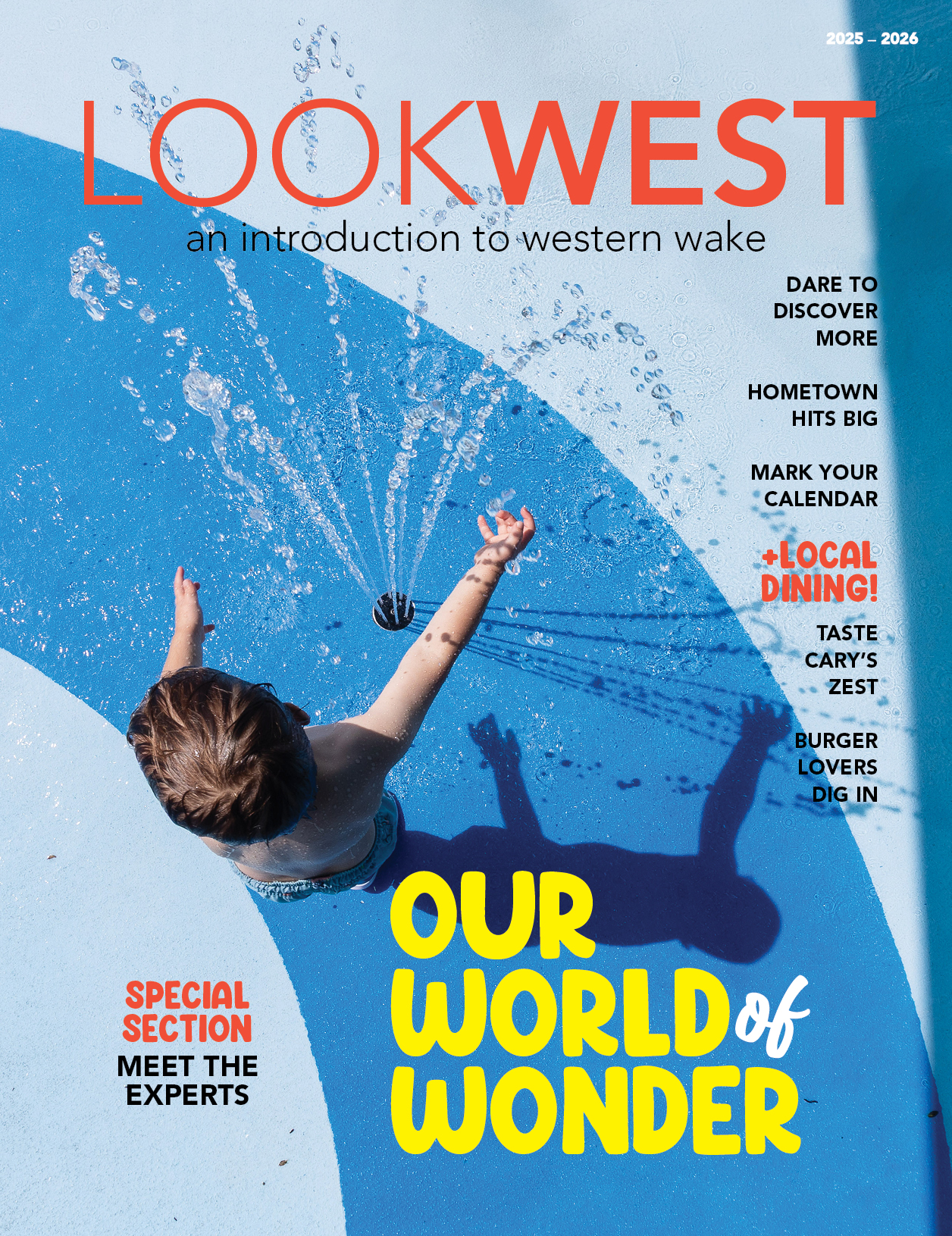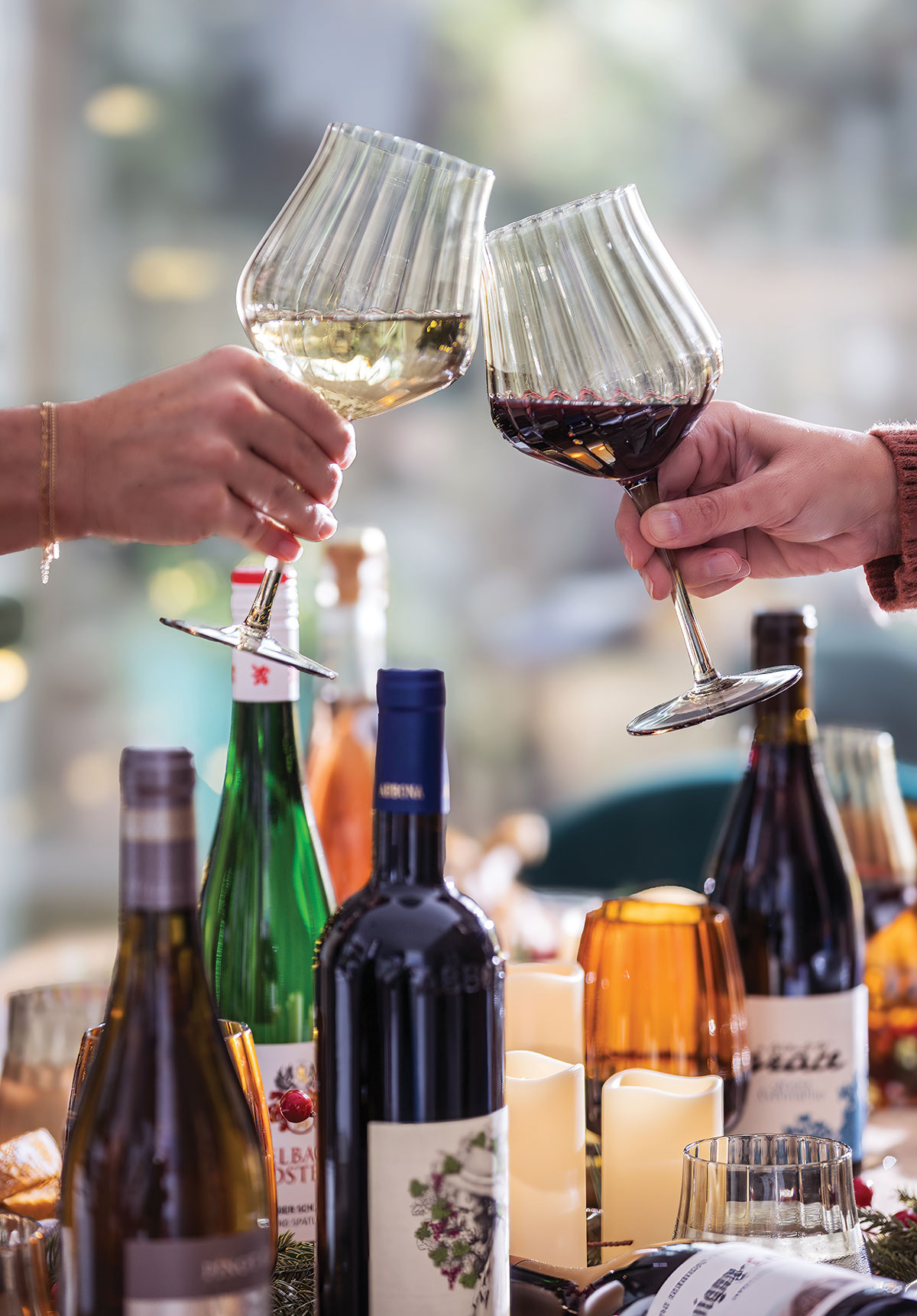
Local retailers, such as Wine 100, Cellar 55, and Triangle Wine Company, will help you navigate the personalities and palates around your holiday table to find the perfect bottles for your gatherings.
Remember: Choosing wine shouldn’t feel like a test; it should feel like part of the celebration.
Vivid personalities tend to come on even stronger during holiday gatherings. Perhaps it’s an overbearing mother-in-law (not mine, of course), a kooky great aunt, or a know-it-all cousin. Whatever quirky personalities surround your holiday table, there’s a wine to satisfy every palate.
Instead of suggesting bottles based on a holiday menu, I’ve called on more than 20 years of training as a sommelier and wine professional to offer recommendations fitting the archetypes that gather around my table. I hope it helps you navigate your own holiday hosting (or at least makes you chuckle).
For the aunt who insists on ice in her pinot grigio

Don’t try to fight it — instead, grab a bottle of really tasty pinot grigio that will complement many dishes on the table and might even satisfy my cousin, who isn’t happy until she pours her beloved New Zealand sauvignon blanc. For this, I recommend Marco Felluga’s pinot grigio from Collio.
Here’s the thing: Plenty of wine pros turn their noses up at pinot grigio because it lacks a story or sense of place. Many bottles on the shelf are labeled Delle Venezie, which means the wine can come from three different regions in northern Italy. The result is often a generic, mass-produced beverage rather than a magic elixir that captures a vineyard in a glass.
Marco Felluga’s version is different. Grown on the hills of Collio, just 12 miles from the Adriatic Sea, this pinot grigio reflects its home. The minerals of the ancient soils and the touch of sea spray create a wine that feels rich on the palate, with zippy lemon and acacia flower notes. So if Aunt Mildred wants to put ice in hers, let her. This wine is more than just refreshing — it’s a bottle that will please almost everyone at your holiday table.
For the sister who just wants something sweet

The obvious choice is Moscato d’Asti, and I fully support that. But if you’d like to add a bit more sophistication with a wine that works across the holiday meal, allow me to suggest Johannes Selbach’s Riesling.
Riesling tends to spark strong feelings, but trust me — this isn’t just any Riesling. It’s Selbach-Oster Zeltinger Schlossberg Spätlese. Don’t let the label intimidate you: Zeltinger is the village, Schlossberg the vineyard site, and Spätlese simply means the grapes were picked a little later for extra ripeness.
Yes, it has some sweetness, but it’s balanced by ripping acidity. This comes from one of Germany’s most iconic winemakers, working in arguably the finest stretch of the Mosel Valley. The result is a wine that pairs with so much on the holiday table — whether you’re starting with spicy clams, carving a honey ham, or finishing with Mom’s apple pie.
In the glass, it teems with peach skin, dried apricot, honey, and that mineral snap that smells like rocks after fresh rain. Best of all, it’s relatively light in alcohol — so your guests can pour full glasses without tipping into overripe silliness.
For Grandpa Napa

This guy scans the table, zeroes in on the Napa Cab, and ignores everything else. In a pinch, he’ll stoop to drinking whatever’s on hand, but he’ll whine about it — and, of course, grandpa never brings his own bottle.
Typically, gramps wants the opulent, showy Napa Valley cabernet. He wants to chew on his wine — big alcohol, aggressive tannins, the whole package. And yes, there are great examples that won’t break the bank. Paul Hobbs’ CrossBarn Napa Valley Cabernet, for instance, has all the power with silky tannins to keep it polished.
But since you’re getting the sommelier’s guide here, let me show you something from inside the industry: A Tribute to Grace Dorigo Family Vineyards Grenache. This is the cool-kid wine, and it absolutely delivers. Instead of knocking you over with alcohol and tannin, it mesmerizes with flavors of dried blueberries, a dusting of sea salt, and a hint of white pepper.
This bottle will have grandpa Napa rethinking his choices — and bragging to the ol’ bros about how he’s discovered the “next big thing.” Just do yourself a favor: Hide the extra bottles so you can enjoy some for yourself.
For the do-it-yourselfer

I have Italian cousins who proudly bring their homemade wine and insist everyone tries it — God bless ’em. Maybe you have a neighbor who brews beer at home or blends their own mushroom tea. Thanks, but I’ll be reaching for something from a real vineyard — an approachable Italian red that is affordable with enough complexity to keep it interesting. My pick: Dolcetto di Dogliani.
Dolcetto has long been the wallflower of Piedmont winemaking. In a region where Nebbiolo reigns supreme and Barbera has become, dare I say, trendy, Dolcetto is too often overlooked. Alternatives here could certainly be Montepulciano d’Abruzzo or a young Sangiovese from Tuscany. But the wine that first made me fall in love was Marziano Abbona’s Papa Celso Dolcetto di Dogliani. Sourced from a special hillside south of Barolo and stretching almost to Liguria, this is the richest expression of Dolcetto you’ll find.
An estate-grown wine that pays homage to Celso Abbona, who planted these vines more than 60 years ago, Papa Celso is medium-bodied with notes of dark cherry and subtle licorice. Pro tip: Drizzle a little white truffle oil over your holiday dish to make this pairing sing.
For the discerning palate
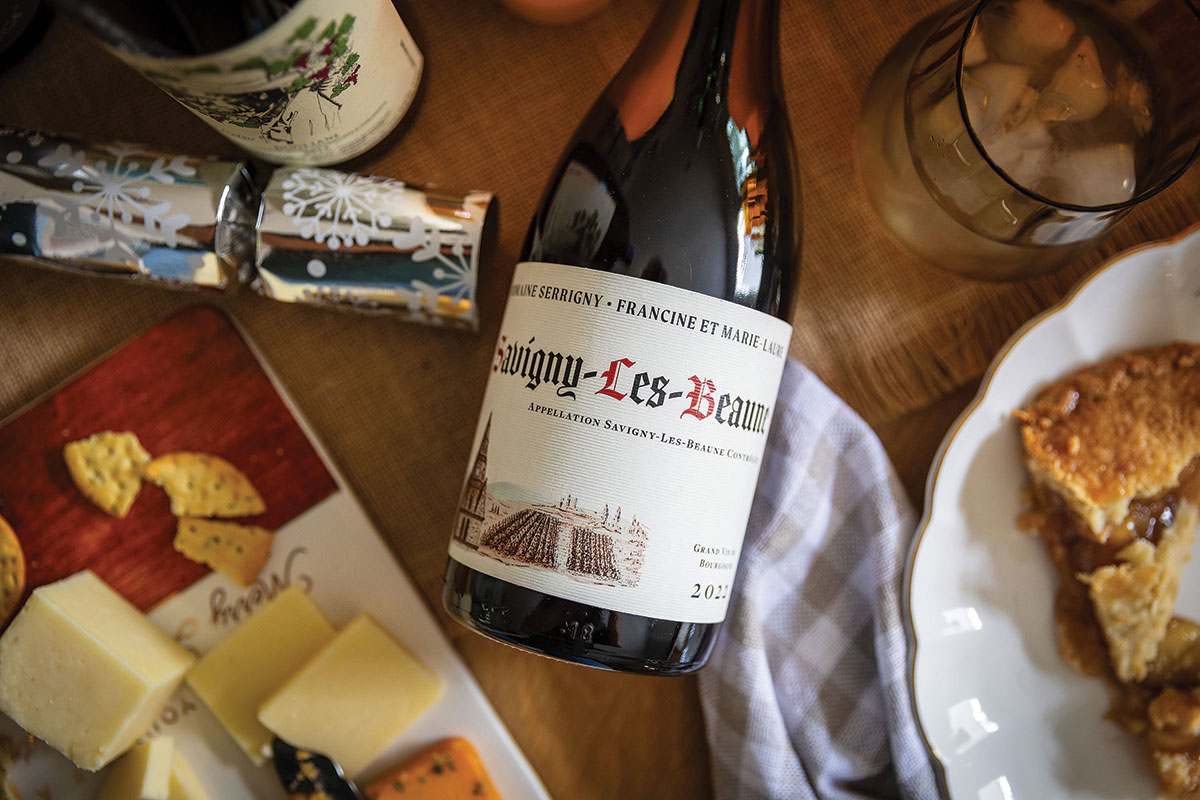
My cousin can walk into any gathering, scan a table, and despite knowing nothing about wine, zero in on the most expensive, special bottle. They then pour a glass filled nearly to the rim and applaud their fine taste.
Let’s honor that natural palate, but be kind to the wallet with the sommelier’s darling: Burgundy. For this, I’ve got two options. First, Premier Cru Chablis (the second tier of Burgundy’s hierarchy). I especially love the fifth-generation team behind Bernard Defaix’s Vaillons. If I were teaching a class, this is the bottle I’d use to show what classic Chablis should be — rich on the palate with golden apple flavors, lifted by the salinity and minerality of Chablis’ white chalky Kimmeridgian clay soils.
And we can’t leave Burgundy without some red. For value, I turn to Savigny-lès-Beaune, like the bottling from Domaine Serrigny. Burgundy is the OG of pinot noir: think tart cherries and grilled portobello mushrooms. These wines aren’t cheap, but they’re timeless, versatile, and guaranteed to satisfy my cousin’s “elevated” palate — while pairing beautifully with a spread of holiday dishes.
For the Wellness Warrior

Sober-curious guests still want in on the holiday toast, and many winemakers are leaning into nonalcoholic options. Germany, with its long history of nonalcoholic beer, is leading the charge. Wolffer Estate on Long Island has a German-born winemaker crafting the vibrant Spring in a Bottle Rosé.
The grapes come from Rheinhessen, Germany — a blend of pinot noir, merlot, and St. Laurent. Organically grown, this wine is legit, bursting with notes of ripe peach, fresh pear, and a touch of dried flowers. The bottle is stunning (and the wellness warrior can even share it with the kids).
